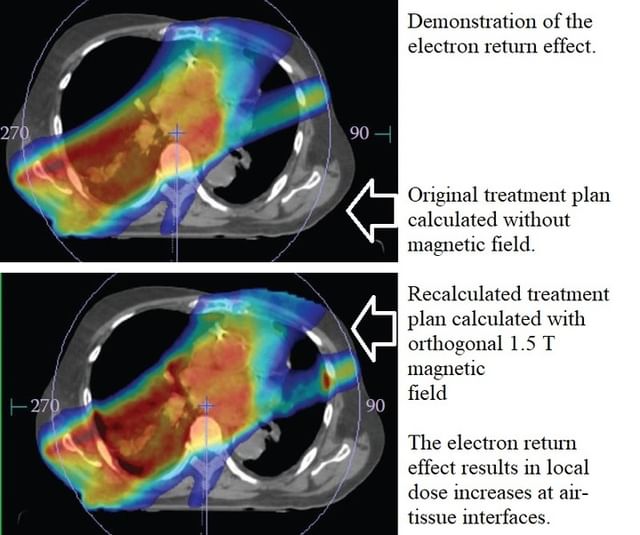Limitations of image-guidance based on MV and kV radiation beams prompted development of systems combining linear accelerators and Magnetic Resonance Imaging (MRI) scanners.

Unique characteristics of these systems and mutual interactions between their components pose specific challenges for their commissioning and quality assurance.
Photon beam is not affected by the magnetic field; however secondary electrons experience the Lorentz force. Orthogonal magnetic and irradiation fields can result in:
(1) altered buildup distances,
(2) asymmetric beam profiles, and
(3) smeared penumbra through tilting of the dose kernel
The success of radiotherapy largely depends on the precise alignment of the radiation beam with the target. MR-gRT extends the soft-tissue contrast and nonionizing advantages of MRI into the treatment room, facilitating management of inter- and intrafraction variabilities.
With future improvements in computational speed, fast acquisition of volumetric MR imaging, and a more complete understanding of how to adapt treatment plans to changes in tumor biology, MR-gRT is destined to be a direct hit.
Reference: Advanced and Emerging Technologies in Radiation Oncology Physics, Edited by Siyong Kim, John Wong, CRC Press, Taylor & Francis Group, 2018

For more information visit our
Website: https://www.uwamedicalphysics.org
Weblog: http://www.uwamedicalphysics.com
Facebook: https://www.facebook.com/UWA.Medical….
Instagram: https://www.instagram.com/uwa_medical…
Twitter: @MedicalUwa
YouTube Channel: https://youtube.com/channel/UCgDxbPag… =========================

